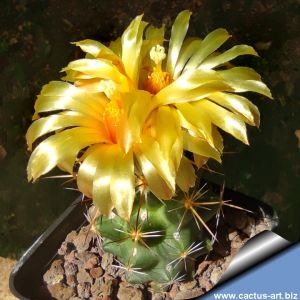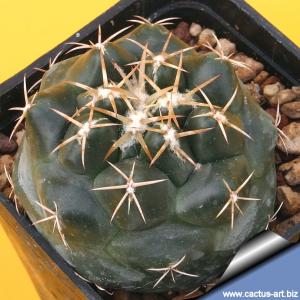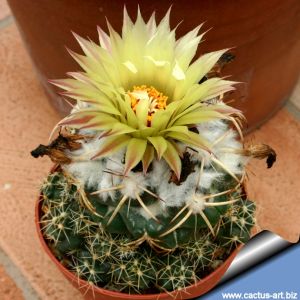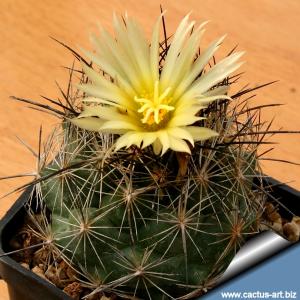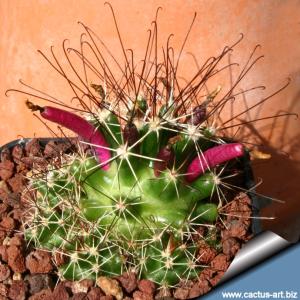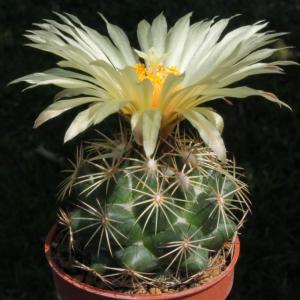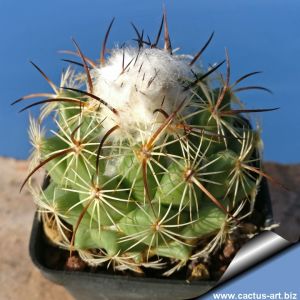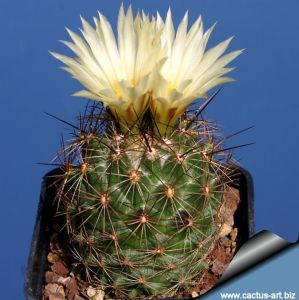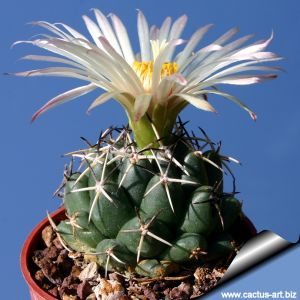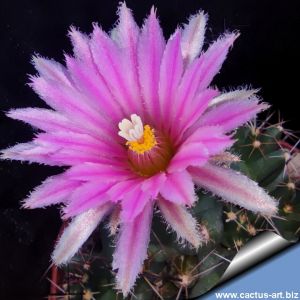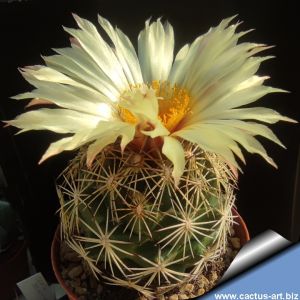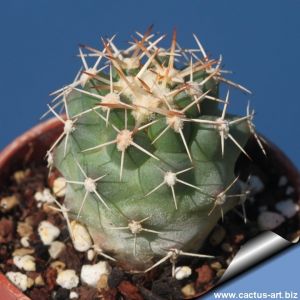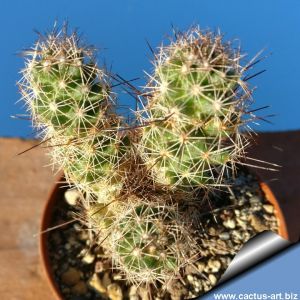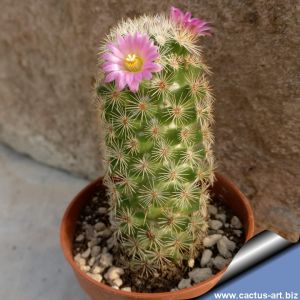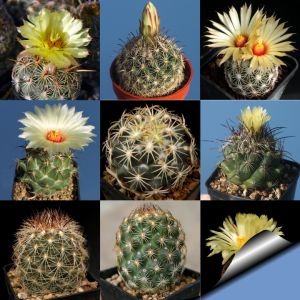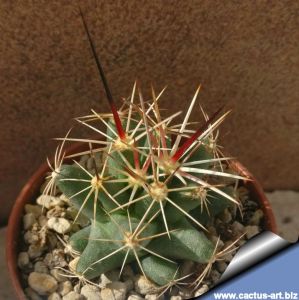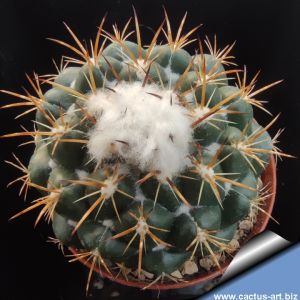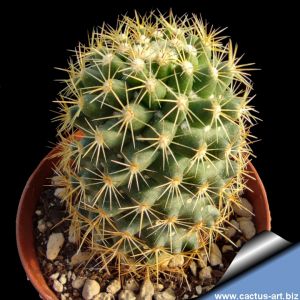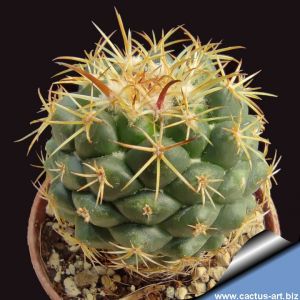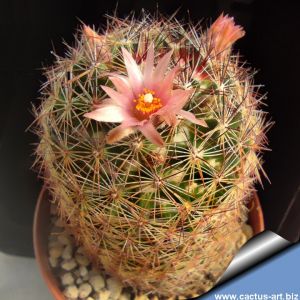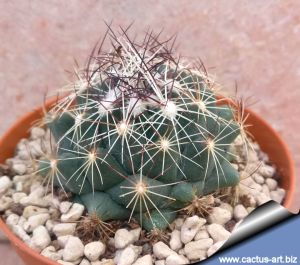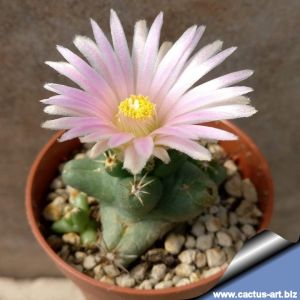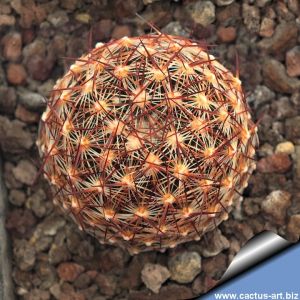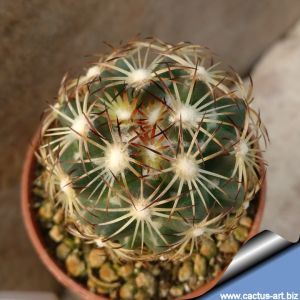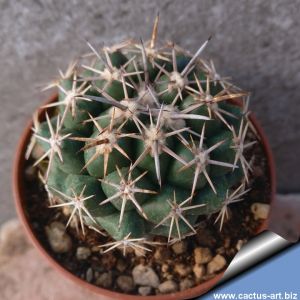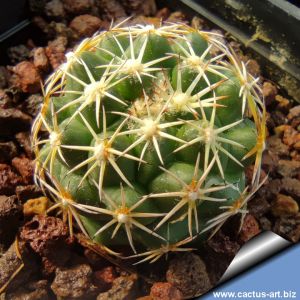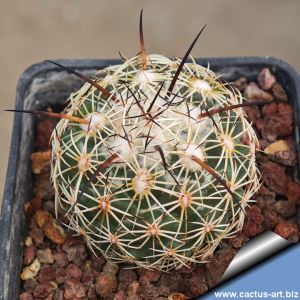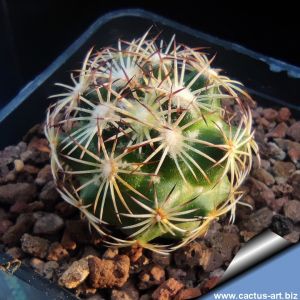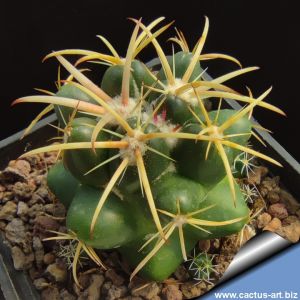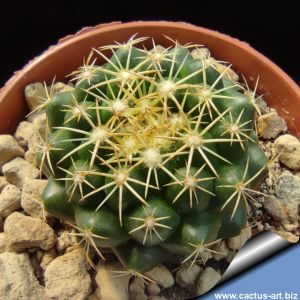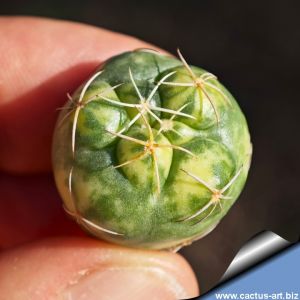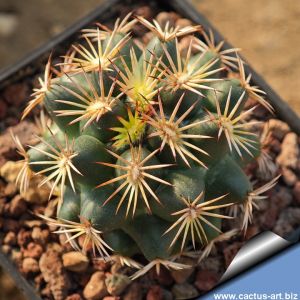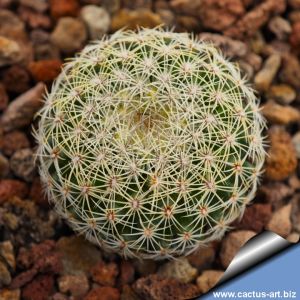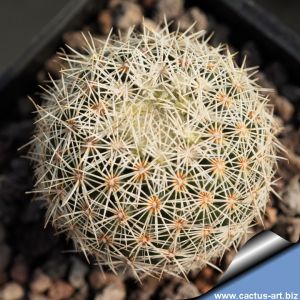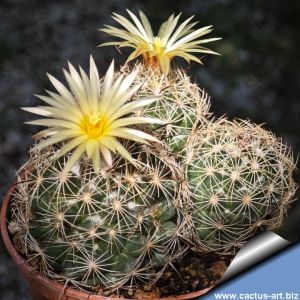-
1
Coryphantha Wohlschlageri is a small cactus with dark green olive green stems 3 to 5cm and the same diameter. The intensely egg-yellow flowers are 5 to 6 cm in diameter and silky.
-
2
Coryphantha elephantidens is characterized by large, bluish-green, mammilliform tubercles and stout, curved, tusk-like central spines. It blooms at the apex with large yellow flowers in summer.
-
3
A cactus with a unique look! Blue-green "elephant skin" tubercles and tusk-like spines, topped with yellow blooms. The "prolifera" form is a burst of life: it pups abundantly, creating dense clumps quickly.
-
4
-
5
Cumarinia odorata was described as Coryphantha odorata by Bödeker in 1930, transferred into the genus Neobessaya by Werdermann and thence to the new genus Cumarinia by Knuth which, in turn, was reduced to a sub-genus of Neolloydia by Backeberg in 1942.
-
6
Coryphantha palmeri is a globose cactus with usually one stout hooked central spine. It is one of those Coryphanthas which pass a purely radial-spined long youth stage. After several years they develop the central spines. It is extremely variable.
-
7
It is dimorphic: juveniles have short tubercles and only radial spines, but mature plants develop strong central spines and elongated tubercles. This transformation gives the plant its distinctive pineapple-like adult appearance.
-
8
-
9
-
10
-
11
-
12
-
13
-
14
Fingerlike body covered in short white spines, huge tuber. Nice pink flowers in ring near top.
-
15
Mix of Coryphantha species and cultivars - Each plant is unique, with different shapes and colors. A very interesting selection at an affordable price.
-
16
-
17
-
18
-
19
Irregular growth with both bare areoles and spiny areoles in alternating bands.
-
20
A very spiny cactus with single or occasionally clustering stems. Short tubercles are densely covered with white or light-brown radial spines and stronger central ones that often hide the stem. Small pale-pink to soft-violet flowers bloom at the apex.
-
21
-
22
-
23
Exceptionally tough, featuring large woolly beige areoles, creamy radial spines, and striking brick-red centrals. Lovely! Fully winter hardy (winterhart).
-
24
Variety with a round, dark green body and stiff, pectinate spines. It produces large yellow flowers with red anthers. A truly captivating plant.
-
25
Coryphantha difficills (difficult pincushion) is a long-lived cactus that only starts reproducing after 15 years. The curved spines range from white to rust red. Generally, it does not offset into clusters.
-
26
Coryphantha scolymoides has pale green stems, with tubercles ascending like tiles, spines numerous, radials ones flesh-coloured with a single central spine recurved, black, grey at the base. Flowers large, yellow with read throat.
-
27
Round dark green body, whitish radial spines, darker hooked central spine, large yellow flower. In culture Coryphantha pallida is without problems and regularly shows its large pale yellow flowers.
-
28
Plant with round, dark green stems, white-yellow radial spines, and a dark, arched central spine. Large, glossy yellow flowers.
-
29
Massive tubercles bearing formidable fang-like spines - spreading unevenly, curved, and appressed (never upright). Noticeably lacks central spines. Produces showy yellow flowers.
-
30
-
31
A gorgeous plant featuring a bicolored stem with yellow and green zones or stripes. Its vibrant contrast and irregular patterns make it truly eye-catching and unforgettable.
-
32
Striking plants featuring elongated areoles and spines aligned in a comb-like pattern.
-
33
A slow-growing botanical treasure, cloaked in dense white-to-yellow radial spines. Central spines, brown in color, appear only several years after germination, culminating in a dramatic display. The vivid yellow flowering is truly spectacular.
-
34
Juvenile plants wear a smooth "armor" of short, white flattened spines. At maturity, dark central spines erupt, creating a striking before/after effect. The years-long transformation rewards patient growers with a true botanical spectacle.
-
35
Globose with thin radial spines and partially recurved central spines, 2–3 cm long, dark reddish-brown. Flowers pale yellow with a characteristic silky sheen, fading toward the tips to a bright creamy hue, creating an elegant and distinctive appearance.

